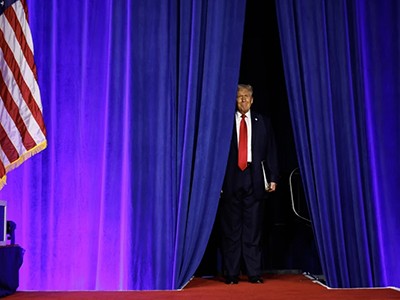I paid close attention to the 2024 US presidential election — both as a US citizen and as a researcher who studies international-student mobility and racial equity in science education. In the past few weeks, dozens of students have shared with me their fears and apprehensions about possible changes in policies around immigration and science funding after the election of Donald Trump to a second term. They worry, for example, about obtaining and retaining visas for themselves and their families, or about the continuity of grant-sponsored funding.
Although the policies of the incoming administration are not yet unsettled, fears and uncertainties can wreak damage on student morale. International graduate students are crucial to the academic enterprise. They help as research and teaching assistants, widen campus perspectives and enrich scholarship. Higher-education faculty members and administrators must act now to support them.
How the world will weather Trump’s withdrawal from global agreements
Many of these fears are founded in the anti-immigration rhetoric and policies of the first Trump administration of 2017–21, which also featured prominently in the latest election campaign. In 2017, for example, the federal government brought in a controversial travel ban that primarily blocked immigrants from 7 Muslim-majority countries, affecting more than 17,000 students in the United States at the time. The ‘China Initiative’, which aimed to curb economic espionage, running between 2018 and 2022, often targeted researchers of Chinese heritage, contributing to tensions that have continued during the administration of US President Joe Biden. According to China’s US embassy, Chinese students with valid visas are still being deported now. Many US-based scholars continue to limit their research collaborations with scientists based in China.
During Trump’s first term, many international students said that they didn’t dare leave the United States, even for short breaks to visit their families, for fear that they wouldn’t be allowed back, despite their legal right to return. This atmosphere, combined with reduced funding from the US federal government for some areas of science and environmental research, led many international students and US students of colour to consider career changes. The US Environmental Protection Agency, for example, saw cuts in its budgets and a reduction in its workforce — by roughly 1,200 people — in the first 18 months of the term.
Hopes, fears and uncertainty: life scientists react to Trump’s election victory
So what can faculty members and administrators do to support students in these uncertain times? First, check in with the students in your classes, laboratory, programme, department and institution. As part of my research, I examine immigrating students’ perceptions of US politics and policies (C. Yao et al. J. Coll. Stud. Dev. 65, 573–590; 2024). I know how invested these students were in the outcomes of this presidential election, even though they couldn’t vote, because it might directly affect their livelihood and education. Listen to their thoughts and opinions, whether in one-to-one meetings or in open forums.
Questions will inevitably arise about funding, so be proactive in ensuring that scholarships or fellowships will remain as secure as possible. Reach out to institutional grants offices, ask about any upcoming changes or delays and do all you can to guarantee continuity.




